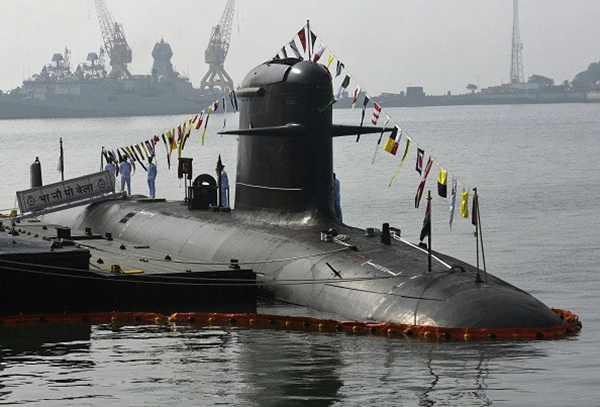
Naval Group, a major French submarine maker, pulled out of India’s Project 75 (I) in early May. It mentioned the conditions in the request for proposal (RFP) as the reason for exiting the project.
The RFP for the Project 75 (I) was sent to France’s Naval Group-DCNS, Russia’s Rosoboronexport, Germany’s Thyssenkrupp, Spain’s Navantia and South Korea’s Daewoo. As this project will be completed under the Strategic-Partnership model. All three European and Russian companies have now pulled out of this project, leaving only Navantia and Daewoo in the race.
These five companies had to choose between two Indian companies, Mazagon Dock Shipbuilders Limited (MDL) or Larsen & Toubro (L&T), to manufacture these six submarines in India.
The provision was to build these six conventional submarines in the country only in a joint venture with a foreign company.
Scorpenes Under Construction
The Naval Group is making six Scorpène-class submarines in collaboration with MDL. Of these, four, the Kalvari-class submarines, have joined the Navy, the fifth is under sea-trial and the sixth Vagsheer was launched earlier this month.
These are six conventional diesel-electric submarines. AIP, ie, Air-Independent Propulsion system developed by DRDO will be retrofitted during mid-life upgrade. The advantage of AIP is that they will not need to get out of the sea again and again. That is, in a way, they are stealth-submarines. AIP allows non-nuclear submarines to operate without access to atmospheric oxygen. These stealth-submarines do not need to be taken out of the sea like the diesel-electric submarines.
Background
Vagsheer — the last of six Indian-made Scorpene-class submarines — was lowered into the water for trials in Apil. The Indian Navy has six new underwater boats, four of which (Kalvari, Khanderi, Karanj and Vela) are in service and the others (Vagir and Vagsheer) will be commissioned by early 2023.
Failure to conclude the construction of six more Project 75(I) conventional submarines with AIP will mean the assembly line will be idle. Technical skills to manufacture a submarine will be lost if a deal is not finalised soon.
India commenced getting its Foxtrot-class submarines from December 1967, from the then USSR. By 1974, it had eight such submarines. In 1981, New Delhi entered into an agreement with German HDW, to buy two Type 209 submarines. While these submarines — INS Shalki and INS Shankul — were being built the HDW scam broke out. The government did not use the ‘option clause’ in the agreement for the construction of two additional submarines.
By 2028-29 most of the Kilo-class submarines may be out of action. The Russian submarines have been the mainstay of the Indian fleet for the past two decades. As replacement for the old Foxtrots, India turned to Moscow and bought ten Kilo-class boats, commencing mid-1980s. The last of the Kilo-class boat – INS Sindhushastra – was commissioned in 2000. Of these, INS Sindhurakshak exploded and sank near Mumbai in 2013. India gifted the decommissioned INS Sindhuvir to the Myanmar Navy. Seven out of the eight remaining submaines have outlived their lifespan but are still functioning due to upgrades.
In February 1999, the Cabinet Committee on Security approved a 30-year plan that envisaged two production lines – P-75 and P-75I – to make 12 submarines at two Indian shipyards.
The UPA government signed the Rs 23,653 crore P-75 deal in 2005. As per the contract, the French supplier DCNS was to deliver all the six submarines — manufactured at MDL — by 2012. Though the 30-year plan envisaged two production lines operating simultaneously, the government decided to go for only one.
The first Scorpene submarine was handed over to the Indian Navy in 2017, five years late.
The defence ministry had, in April 2021, cleared the way for the construction of six new stealth P75I submarines for the Indian Navy amid the challenges being faced by China in the Indian Ocean. The Defence Acquisition Council had given the green signal under the Strategic Partnership Model. The ministry issued the RFP in July 2021. The cost of this project named Project 75 (India) is Rs 43,000 crore.

















